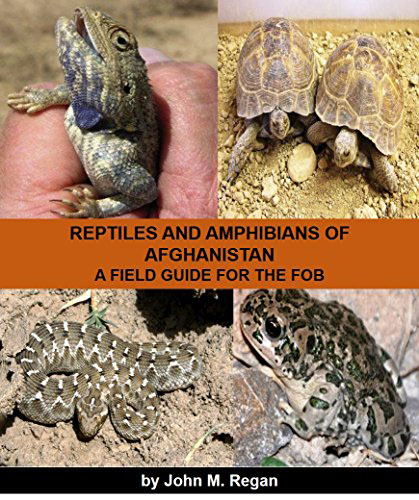
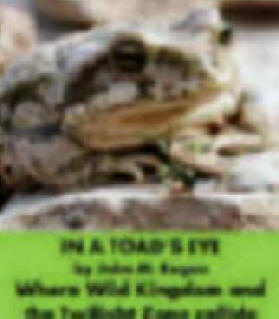
< >
Afghan Arabia Wild
AFGHANISTAN BIRDS
The avian population of Afghanistan is surprising is several respects. They have their own unique species: unexpectedly large birds of prey like the Steppe Eagle, flashes of color provided by the Bee Eaters, and a touch of exoticism courtesy of the odd looking Hoopoe. Flocks of ducks provide a surprise by turning up in the most unlikely desert locations. But what I did not expect to see was the number of very familiar looking species common to the US. Doves and sparrows, of course. The soft cooing of doves is a lovely sound from Egypt through Central Asia and elsewhere. The tough little sparrow could survive on the moon, and they are here in force. But grebes, mallards, and coots? The sight of those guys was a delightful surprise. Pictured below are the more common birds I've managed to get on digits.
For identification of the avians below I am indebted to Anssi Kullberg, First Secretary, Unit for Humanitarian Assistance, Refugee Issues, UNHCR, UNRWA, Middle East, who graciously took the time to review and not only name the species, but provided the scientific terminology as well.
Laughing Dove (Streptopelia senegalensis)
Common Myna (Acridotheres tristis)
House Sparrow (Passer domesticus), female
Crested Lark (Galerida cristata)
Short-toed Snake-eagle (Circaetus gallicus)
Steppe Eagle (Aquila nipalensis)
Blue-cheeked Bee-eater (Merops persicus)
Common Moorhen (Gallinula chloropus)
Great Crested Grebe (Podiceps cristatus)
Black-winged Stilt (Himantopus himantopus)
Northern Shoveler (Anas clypeata)
Isabelline Shrike (Lanius isabellinus)
White Wagtail (Motacilla alba), male
Bluethroat (Luscinia svecica)
Citrine Wagtail (Motacilla citreola), the Central Asian subspecies calcarata
< >


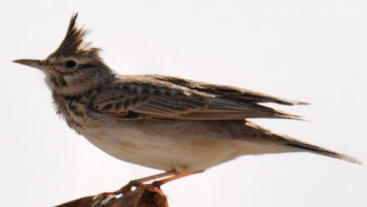
The three most common bird species in Afghanistan, and probably the Middle East and Central Asia are the Laughing Dove (who's gentle cooing is a familiar sound throughout the Middle East), the Common Mynah, and the House Sparrow. The most common bird in the desert throughout the Middle East and Central Asia is without doubt the Crested Lark on the right. Crested Larks will follow camels and any other large mammal including humans hoping that they will disturb some insects. I cannot recall any time during my desert meanderings that I have not been accompanied by them. Doves and sparrows are primarily urban dwellers and are attracted by human settlements, although the doves fare quite well in the desert as well. The Common Mynah simply loves human dwellings; I don't recall ever seeing one outside of one of our Forward Operating Bases, a town, or city. The Crested Lark is a nearly exclusive dweller of the desert.
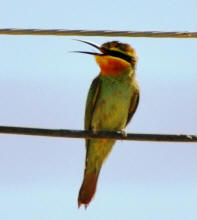
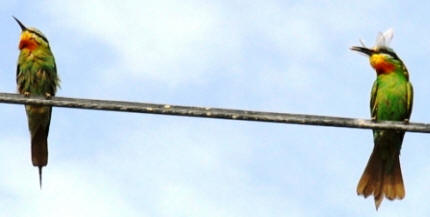
From the big and bold to the small and flashy. On the left is a Short toed Snake Eagle, followed by a Steppe Eagle. Pictured on the right are a couple of the most colorful birds in the region, the striking Bee Eaters, in this case Blue Cheeked Bee Eaters. One of the little guys has a freshly caught dragonfly in its beak. Males have been known to offer such delicacies to females during courtship, although I am not sure if that is what is taking place here.
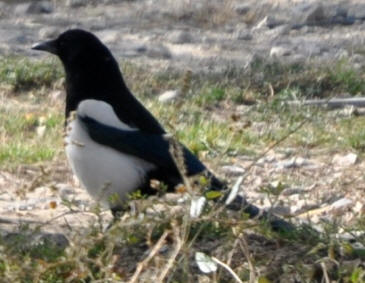
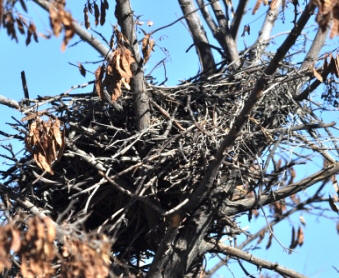
There are ravens here, but as in most of their ranges around the world this species is found in fairly remote places. I have seen them only in mountainous regions in one part of the country. But one member of the corvid family found throughout the country is the Magpie. Often considered a pest due to their opportunistic behaviors, I find them fascinatingly intelligent and beautiful. As you can see the magpie nest is not something you'd call a thing of beauty, but the birds must find in comfortable because they return or stay near the same nest year round.
< >

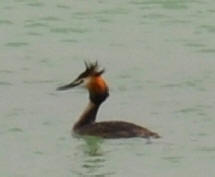
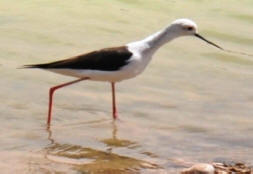
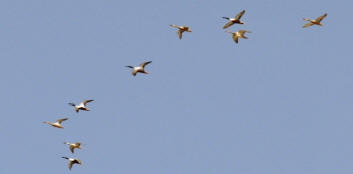
Then you run into birds you never expect to see in the desert region of southern Afghanistan. From left to right: Common Moorhen, Crested Grebe, Black Winged Stilt, and a flock of Northern Shovelers. All of these species were found around a reservoir pond in Kandahar; one of the driest, hottest places in the country if not the world.

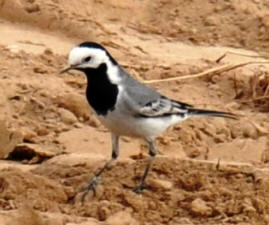
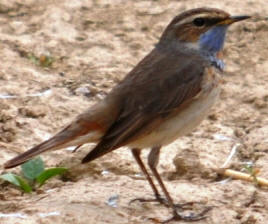

Some random examples of avian species I've come across. From left to right: an Isabelline Shrike, a very effective predator of small animals; a White Wagtail, a Bluethroat, a Citrine Wagtail, and the striking Hoopoe, a large bird mainly found in the northern regions of the country.
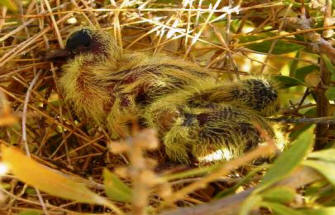
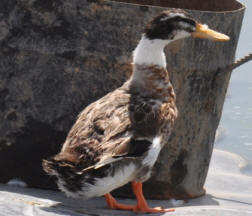
Random sightings. One day I passed tiny bush in the desert; hidden in its depths were a pair of ping pong ball sized, glistening eggs. I returned a few days later and found a couple of Laughing Dove chicks. Their ability to survive the furnace of the Kandahar desert is remarkable. The large duck on the right is a called an Indian Running Duck. Why? Because they don't fly or waddle - they run. They are raised domestically here, but it certainly surprised me when I found this one wandering around a Forward Operating Base in Helmand Province. And later saw one on display at the Oregon Zoo in Portland.
< >